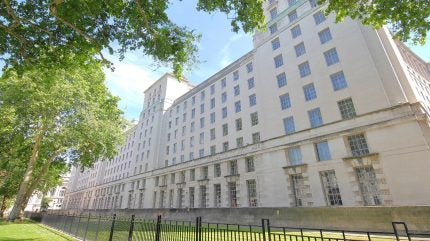
Workforce cuts will reduce the Ministry of Defence (MoD) civil service as part of upcoming defence reforms.
Minister for Defence Procurement, Maria Eagle, alluded to the coming job losses in a parliamentary written response on 7 April 2025, as the government tries to cultivate a “workforce which will be more skilled, agile and… better exploits technology.”
This restructuring “means tackling bureaucracy and streamlining processes to increase productivity” across the MoD.
Problems in recruitment and retention are said to have risen under the previous Conservative government, Eagle claims, which were unloaded onto the new Labour government. The number of UK Armed Forces personnel has fallen by 1.3%, or 2,350 people, since January 2024 according to recent statistics.
However, promising results have emerged as a result of defence procurement reforms that the former government instituted in February 2024. These measures were directed by Eagle’s predecessor, James Cartlidge, which sped up the delivery of the first Archer artillery system six months after signing the contract, and developing DragonFire laser weapon systems soon to be fitted onto Royal Navy warships.
Cuts in context
The UK government had originally tasked all departments to cut down on spending to realise potential efficiencies. In Labour’s first Budget statement in October 2024, the Chancellor, Rachel Reeves, tasked departments with making 5% reductions.
Now though, given inflationary pressures from US tariffs and the trend towards European strategic autonomy over the last few months, the MoD will need to scrape the barrel even more.
In a testament to the Defence Committee last year, the MoD’s Permanent Secretary David Williams referenced a headcount reduction by around 10%, or over 5,000 people, by the end of the current parliament.
At present, the MoD employ 60,549 people full time according to figures from November 2024. This has reduced by 1.4% from 62,631 personnel in October 2023.
New funding focus
Following cuts to the civil service workforce, the MoD will allocate the funds towards delivering capability as laid out in the MoD’s Defence Industrial Strategy statement of intent published at the end of last year.
Defence will be an integral part of Reeves’ efforts to boost economic growth, and as the global defence industry picks up pace in a fragmented security environment, at least 10% of MoD funds will be spent on developing “innovative” capabilities.
It is unclear what the definition for innovative technologies allows for, although it is likely a call to promote the greater integration of small and medium enterprises in providing for military capability, an area where the MoD has historically been poor.
Likewise, the government will no doubt prioritise enablers such as space over domain-specific platforms, which is something Cartlidge, now the Shadow Defence Minister, similarly called for in a speech in March 2025.
Additional reporting from Richard Thomas.




